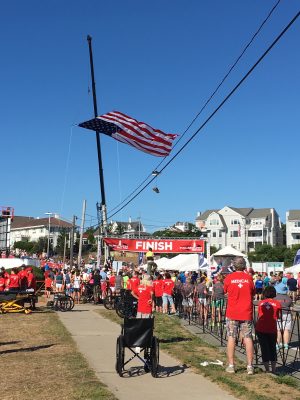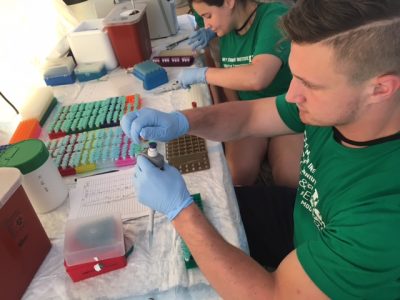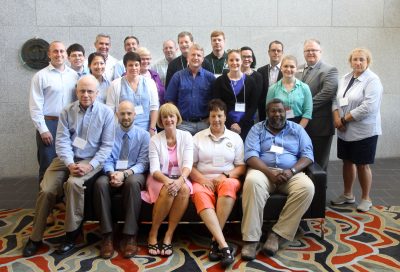By Ben Cates
Currently, the Virginia High School League operates under heat guidelines it installed in the last decade. Those guidelines and restrictions are important, especially given the science behind heat-related illnesses and the dangers facing teenagers throughout summer and into the fall season.
Those guidelines are also thorough. They provide facts about the threat of extreme heat and humidity, signs and symptoms of illnesses and how environmental factors play a role in the risks facing young athletes, especially football players.
The VHSL relies on heat index (the combined effects of temperature and air humidity) to recommend when athletes should and should not practice, when they need to go without equipment and when they should be carefully monitored for heat-related illnesses.
For instance, when the “humiture” is below 89 degrees, the VHSL recommends water breaks every 20 to 30 minutes. On days when it’s between 90 and 94 degrees, equipment should be removed as often as possible. At 95 to 104 degrees, the VHSL recommends practicing without equipment. And at 105 degrees or higher, all outside activities should be canceled.
There is, however, at least one problem with this measurement.
The heat index literally has it made in the shade. That is, it’s supposed to be measured out of direct sunlight.
The last time I checked, there isn’t too much shade around football fields. And while the majority of fields are grass, some are synthetic turf, which adds at least 10 degrees to air temperatures.
A more accurate measurement can be reached with a wet bulb globe, which takes into account not only ambient temperature and humidity, but wind speed, cloud cover and sun angle.
According to the Korey Stringer Institute at the University of Connecticut, the majority of deaths in a given football season occur in August in the eastern part of the U.S. According to the organization’s website, “over half of the reported deaths occurred during morning practices when humidity levels were high. These results show a direct correlation between increased temperature and humidity levels and the risk of mortality as a result of [Exertional Heat Illness],” or EHI.
We are well beyond two-a-days now. Players are practicing directly after school. They’re busy working during hottest part of the day, in a month of high humidity, in the midst of a year featuring record-breaking temperatures.
For 2016-2017, the VHSL has required all its member high schools to have emergency action plans in place. While those policies are by no means an end-all approach toward complete safety, they are a start.
Requiring that all member schools have athletic trainers on site would be another step in the right direction. Those athletic trainers, though, are often stretched to the max. It isn’t conceivable for them, in the midst of high school duties, to assist at middle schools, where a certified athletic trainer usually isn’t present.
The good news is that with proper education and implementation, heat illnesses are often avoidable. Cramping, dizziness and excessive sweating are all signs of a problem, but heat-related struggles can exist without those symptoms. That’s what makes practicing in the summer and early fall so dangerous and, sometimes, life threatening.
Hydration, proper nutrition and regular weigh-ins are, of course, vital to lowering the risk of heat-related injuries. Socio-economic conditions, though, often determine whether a student is getting the right kinds of fluids and nutritious meals in a timely manner.
And take a look around you: there are athletes everywhere growing up in poverty. They deserve a chance to play sports and let their talents shine; they also deserve a fair chance: proper education and the opportunity to implement that knowledge on a regular basis.
Athletic trainers constantly drill safety lessons into young athletes. They are also charged with figuring out when it’s too hot for pads, when athletes need regular water breaks and watching for heat distress among their other duties.
These employees adhere to their own governing body, the National Athletic Trainers’ Association, or NATA. Through that organization and a healthy, ever-advancing body of research, athletic trainers have at their disposal wide-ranging, practical knowledge.
Many of them, for instance, already use a wet bulb globe, exceeding outdated standards. Those who don’t may run the risk of seriously handicapping not only their programs but their athletes.
Here’s hoping the VHSL moves to a less-antiquated form of measuring heat and does so soon.
Later may be too late.
Source: Daily Progress
 Twenty-seven research and medical volunteers from the Korey Stringer Institute, EC Lee Lab and University of Connecticut joined the 44th New Balance Falmouth Road Race in Falmouth, MA on August 21st. This was the fourth consecutive year in which KSI conducted a field research study at the race in conjunction with working in the medical tent treating exertional heat stroke patients. In this year’s study, we aimed to (1) investigate runner’s knowledge on heat and hydration and behaviors on race day and (2) investigate the use of real time gastrointestinal temperature feedback in altering runner’s behavior during the race. We also assessed participants’ readiness to exercise in the heat by measuring their cardiovascular fitness and their response to heat stress in our environmental chamber.
Twenty-seven research and medical volunteers from the Korey Stringer Institute, EC Lee Lab and University of Connecticut joined the 44th New Balance Falmouth Road Race in Falmouth, MA on August 21st. This was the fourth consecutive year in which KSI conducted a field research study at the race in conjunction with working in the medical tent treating exertional heat stroke patients. In this year’s study, we aimed to (1) investigate runner’s knowledge on heat and hydration and behaviors on race day and (2) investigate the use of real time gastrointestinal temperature feedback in altering runner’s behavior during the race. We also assessed participants’ readiness to exercise in the heat by measuring their cardiovascular fitness and their response to heat stress in our environmental chamber.



